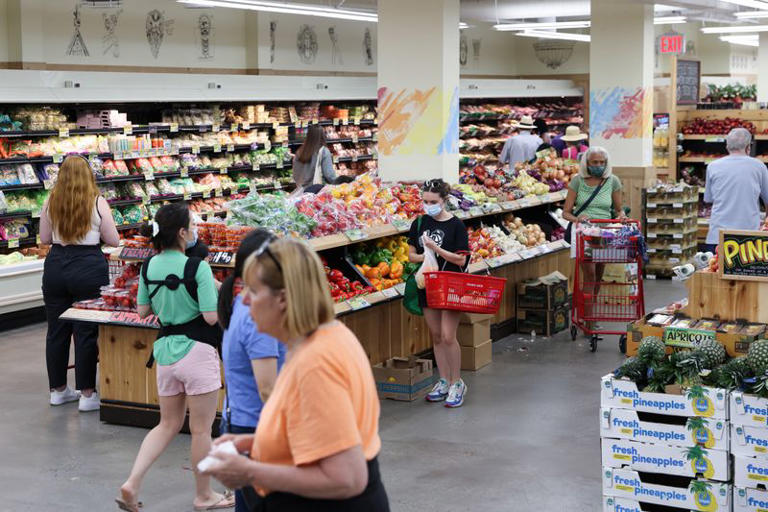In June, U.S. consumer prices registered their first decline in four years, marking a notable shift towards disinflation as key components such as gasoline and rents moderated. The report released by the Labor Department underscored a 0.1% dip in the Consumer Price Index (CPI), a departure from the stability observed in May, and a significant development for Federal Reserve officials closely monitoring inflation dynamics.
The decline in CPI was largely influenced by a substantial 3.8% drop in gasoline prices, following a 3.6% decrease in May. This sharp decline in fuel costs exerted downward pressure on the overall index, providing immediate relief to household budgets. Additionally, shelter costs, including rents, rose modestly by 0.2% in June, a slower pace compared to the 0.4% increase seen in May. Food prices continued their gradual ascent with a 0.2% rise after a 0.1% uptick in May, reflecting ongoing pressures in the food sector.
On an annual basis, the CPI increased by 3.0% through June, marking the smallest year-over-year gain since June 2023, down from the 3.3% rise recorded in May. This moderation in inflation narrowed the gap between CPI figures and the Federal Reserve’s targeted 2% inflation rate, as measured by the Personal Consumption Expenditures (PCE) price indexes.
Economists, who had anticipated a marginal CPI increase of 0.1% for June and a year-on-year rise of 3.1%, interpreted the data as a robust indication of easing inflationary pressures. The Federal Reserve, which has maintained interest rates within a range of 5.25% to 5.50% since July last year, has faced mounting expectations from financial markets for rate cuts in response to these favorable inflation trends.
Excluding volatile food and energy components, the core CPI in June showed a minimal 0.1% increase, the smallest rise since August 2021, following a 0.2% uptick in May. This core CPI figure was tempered by moderating rents, which grew by 0.3%, marking the slowest pace since August 2021. Other areas of relief for consumers included healthcare costs, which rose by 0.2% compared to a 0.5% increase in May, and declines in prices for airline fares, used cars, new vehicles, and communication services.
Despite these positive indicators, Federal Reserve Chair Jerome Powell remained cautious, acknowledging improvements in price pressures but refraining from declaring victory over inflation. Powell emphasized the need for sustained data validation to bolster the case for potential rate cuts. Financial markets responded by pricing in an approximately 85% chance of a rate cut at the Fed’s upcoming September meeting, reflecting confidence in continued economic stability amidst moderating inflation.
The broader economic landscape also reflected a deceleration in momentum, with second-quarter GDP growth projected near a non-inflationary annualized rate of 1.8%, influenced by previous Fed rate hikes in 2022 and 2023. This economic slowdown has been mirrored in recent labor market data, where unemployment rates rose to 4.1% in June from 4.0% in May, reaching a 2-1/2-year high.
Despite fluctuations in initial unemployment claims, which fell more than expected by 17,000 to 222,000 claims in early July, the overall trajectory of the labor market suggested moderation in activity. With signs of economic softening and favorable inflation trends, the Federal Reserve faces a critical decision in the coming months on whether to adjust its monetary policy stance further to support sustained economic stability and recovery.
